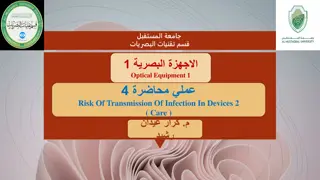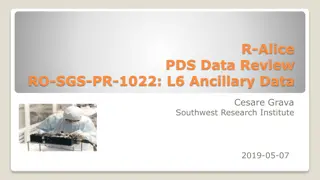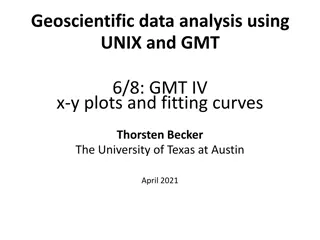GMACS for Scientists: Overview of GMT's Optical Spectrograph
GMACS (GMT Multi-Object Optical Spectrograph) is a cutting-edge spectrograph with a wide wavelength coverage and high resolution, designed for astronomical research. It features a field corrector/ADC system, onboard slit masks for object selection, and compatibility with MANIFEST for fiber optic adaptation. The instrument's specifications, contact information, FAQs, observing configurations, and capabilities as an imager are detailed in the provided content.
Download Presentation

Please find below an Image/Link to download the presentation.
The content on the website is provided AS IS for your information and personal use only. It may not be sold, licensed, or shared on other websites without obtaining consent from the author.If you encounter any issues during the download, it is possible that the publisher has removed the file from their server.
You are allowed to download the files provided on this website for personal or commercial use, subject to the condition that they are used lawfully. All files are the property of their respective owners.
The content on the website is provided AS IS for your information and personal use only. It may not be sold, licensed, or shared on other websites without obtaining consent from the author.
E N D
Presentation Transcript
GMACS for Scientists Daniel Fabricant February 1, 2022
GMACS Executive Summary GMACS is GMT s first-light multi-object optical spectrograph Wavelength coverage 3300 to 10000 in two channels (3300 - 6600 ) and (6600 to 10000 ) Resolution R~1000 to R~6000 with 0.7 slit width Field of view is 7 in the spatial axis, up to 6 in the dispersion axis GMACS operates with a wide field corrector/ADC to minimize slit losses due to atmospheric dispersion and to allow long observations of a selected field. GMACS accommodates 20 on-board laser-cut slit masks for object selection GMACS will also operate with MANIFEST, GMT s configurable fiber optic adapter. The initial MANIFEST field of view is 14 diameter, eventually 20 .
Contacts Role Name Email (@cfa.harvard.edu) PI Daniel Fabricant dfabricant Deputy PI Brian McLeod bmcleod Project Scientist/SAC chair Warren Brown wbrown Program Manager Stuart McMuldroch smcmuldroch Project Engineer Daniel Catropa dcatropa Brazilian Lead Rafael Ribeiro Steiner Institute
Frequently Asked Questions Does GMACS have a flexure control system? Yes, fibers rigidly attached to the slit mask holder are imaged by auxiliary CCDs at the focal plane to detect flexure. The focal plane is mounted on a five-axis stage to remove flexure. Stability goal is <0.25 pixel. How long does it take to configure for a new field? Less than 300 seconds. What are the science CCDs? An 8K by 12K array for each channel with 15 m pixels. Deep depletion CCDs will be used in the red. What is the image scale at the telescope focus? 1 1.04 mm What is the pixel scale at the detector? A 15 m pixel subtends 0.05 so binning by ~3 might be typical. Can GMACS be used as an imager? Yes, but will be limited by scale change with wavelength (lateral color). Do you want to use GMACS as an imager? If so how? Can GMACS be used with GLAO? Yes What is the minimum exposure time? 1 second
Sample Observing Configurations 0.7 Slit Width Configuration R Spectral Range* ( ) Grating (lpm) Resolution ( ) Spectral Range ( ) Blue, low dispersion 1020 3200 6600 (-3 ) 3200 6600 (center) 3530 6600 (+3 ) 500 4.95 3400 Blue, medium dispersion 3320 4002 5227 (-3 ) 4400 5624 (center) 4783 6000 (+3 ) 2000 1.52 1224 Blue, high dispersion 5970 3200 3701 (-3 ) 3293 3863 (center) 3442 4011 (+3 ) 3900 0.60 570 Red, low dispersion 1344 6600-9525 (-3 ) 6600-10000 (center) 6935-10000 (+3 ) 525 6.17 3400 Red, medium dispersion 2644 6600 8751 (-3 ) 6904 9568 (center) 7700 10000 (+3 ) 1000 3.14 2664 Red, high dispersion 5895 8076 9566 (-3 ) 8498 9988 (center) 8887 10000 (+3 ) 1500 1.58 1480 *Blue bandwidth limited by atmospheric transmission to 3200 in the blue and by dichroic cutoff near 6600 in the red. Red bandwidth limited by dichroic cutoff near 6600 in the blue and CCD response near 10000 in the red. Any blue configuration can be used simultaneously with any red configuration Efficiency will generally fall off for slits placed outside 2 due to VPH and binary grating physics




